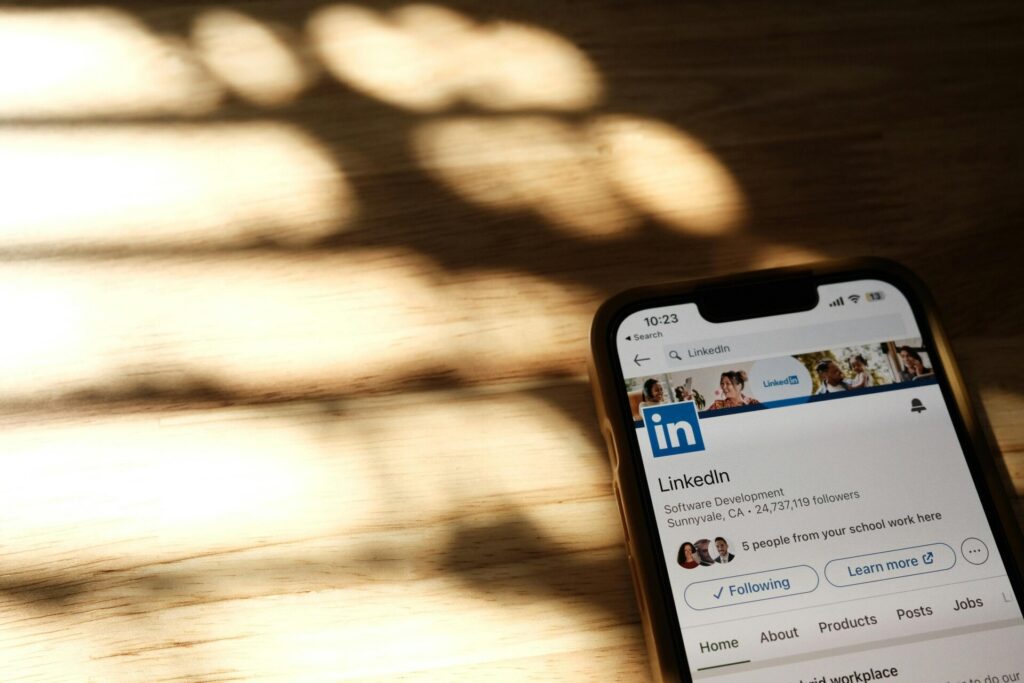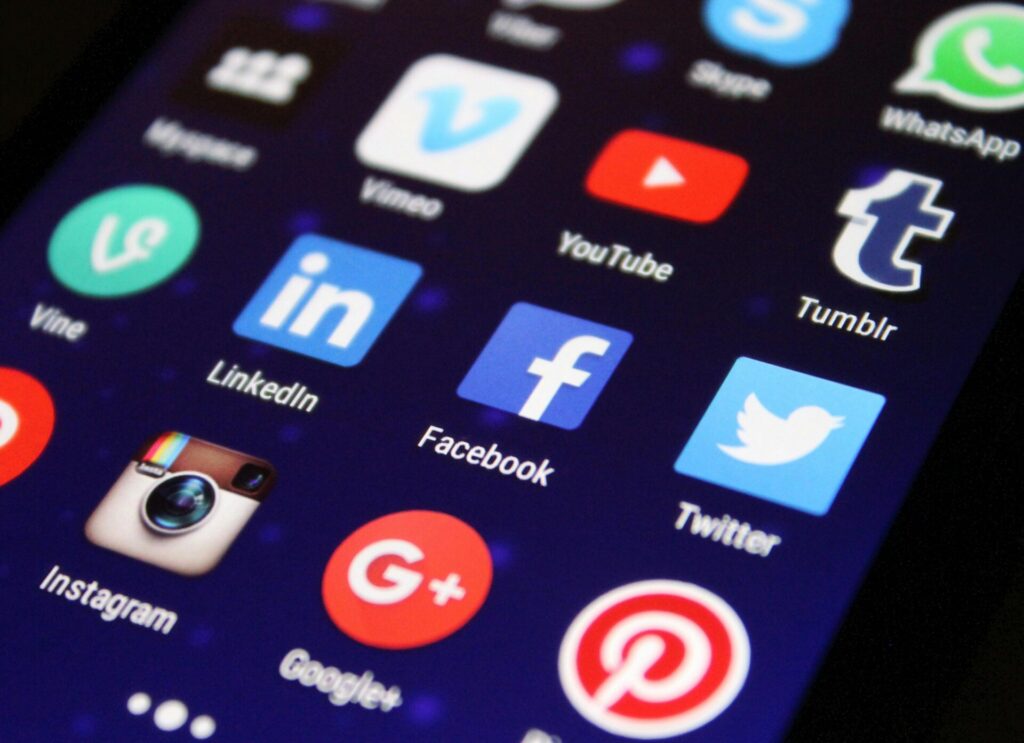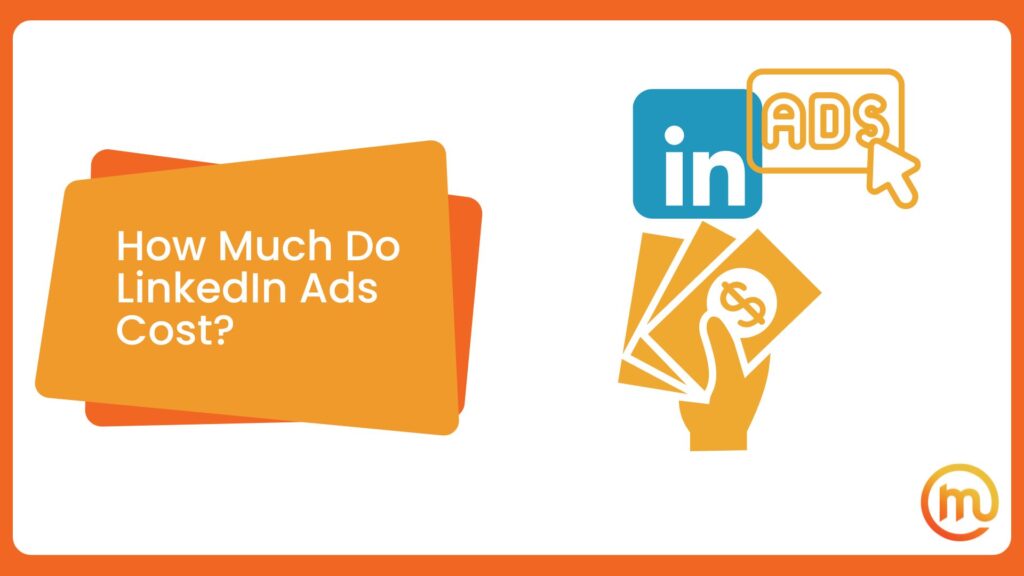The million-dollar question many are wondering about is – how much do LinkedIn Ads cost? With the accurate answer, planning a marketing campaign and budget for the next year can be a straightforward task, and we are here to share it with you. With tips and tricks on maximizing LinkedIn ad performance, setting a realistic spending plan, and cost allocation, it’s possible to generate leads like never before. Let’s dive into the exciting world of marketing.
How Much Do LinkedIn Ads Cost – CPC, CPM, and CPS
The cost of LinkedIn Ads varies depending on the advertising model chosen. On average, businesses are expected to pay between $2.00 and $3.00 for every click when the CPC (Cost Per Click) model is selected. This is the LinkedIn ads cost per click. On the other hand, the CPM (Cost Per Impressions) model cost ranges from approximately $5.01 to $8.00. For those utilizing Sponsored InMail campaigns (CPS), the average cost per send lies between $0.26 and $0.50.
Remember that this social media platform has set minimum bidding thresholds for its advertising options. There is a baseline bid of $2.00 for both the CPC and CPM models. This pricing structure is an important consideration when planning and optimizing future LinkedIn ad campaigns.
Pricing Models For LinkedIn Advertising
Gaining a deeper understanding of LinkedIn advertising costs is pivotal for planning a budget, and one of the key parts of this conversation is pricing models that fit specific objectives. LinkedIn’s three distinct pricing models are designed to cater to different marketing goals and strategies. What you need to know is what your focus is going to be:
- Generating leads,
- Driving traffic,
- Or enhancing brand awareness.
The next step is to strategically allocate funds so as to leverage the platform’s vast network of members. According to Datareportal, there are 922 million users on the platform available for marketers. So, to make the most out of every advertising dollar, we suggest taking a closer look at the pricing models that are going to be integral in improving your business.
For Direct Communication With the Target Audience, Select Cost Per Send (CPS)
This pricing model is uniquely designed for use with LinkedIn’s InMail, allowing you to send sponsored messages directly to the inboxes of LinkedIn users. What should be highlighted is that you incur costs for each individual message that gets sent rather than for clicks or impressions.
If you aim to promote a high-value service or a bespoke event, with this model, you can craft and send customized messages to a specifically curated audience. This could be highly effective for reaching out to decision-makers or specific professional groups on LinkedIn. Instead of casting a wide net as with other models, CPS allows for a more targeted approach.
For Brand Awareness, Choose Cost per Impression (CPM)
An exceptional choice for elevating brand awareness is the Cost-Per-Impression (CPM) LinkedIn Ads model. This approach is centered around maximizing the visibility of your ad, with costs incurred based on the number of times the advertisement is displayed rather than direct user interaction. The business owner is charged for every 1,000 views of the advertisement.
To put everything into perspective, imagine that a new product has to be launched. The CPM model allows your ad to reach a larger audience, which in turn increases the recognition and familiarity of the brand. This is beneficial when the intention is not necessarily to drive immediate clicks or actions but to ensure that a large number of LinkedIn’s professional user base is exposed to a certain brand.
Drive Traffic With Cost Per Click (CPC) to a Website
Using the Cost Per Click (CPC) model on LinkedIn offers a strategic way to effectively drive traffic directly to your website. What’s interesting about this pricing model is that you only pay when someone actually clicks on your advertisement, making it a cost-efficient option for targeted traffic generation.
For instance, if the business’s goal is to increase sign-ups for a webinar or to boost downloads, the CPC model ensures the ad spend directly correlates with the number of users who clicked through the landing page. This ensures that funds are allocated towards actual engagement. With this model, you can garner actionable visits, not just views.
Calculating LinkedIn Ad Spend? Use Our Tips and Create a Budget
Meeting all of your goals cannot be accomplished without determining a monthly LinkedIn Ads budget. A well-thought-out budget will make your campaigns efficient and cost-effective. Look to refine existing strategies with our tips on how to calculate your spending and have marketing content that truly works.
Zero In On the Primary Goals
The first task has to be determining primary goals. This is the foundation of the promotional strategy. What do you need to achieve – lead generation, increasing sales, or boosting brand awareness? A financial plan has to directly support these objectives. For instance, if your main goal is lead generation, fund targeted campaigns and invest in InMail messages or sponsored content designed to capture leads.

Know Who Your Target Audience Is
Bear in mind that the target audience and ad costs are closely connected. LinkedIn’s advanced targeting capabilities allow businesses to reach specific demographics based on factors such as industry, job titles, geographical location, and company size. But why is this needed for calculating the advertising budget? It’s simple.
If your campaign is aimed at C-level executives in the tech industry, expect higher ad costs since it’s harder to get to the highly sought-after segment of LinkedIn’s users. The message needs to resonate with the right people, so basing the content on these individuals helps us know how much needs to be spent.
Take Into Account Cost Per Lead
The next step is to calculate CPL (Cost Per Lead). This is the amount that you’re willing to invest to acquire a new lead. To properly do this, divide the monthly advertising budget by the anticipated number of leads you wish to generate. When you do this, it’s much clearer to understand how much each lead will cost and how resources need to be allocated.
Suppose the financial plan for advertising on this social media platform is $1,000, and the ultimate goal is to generate 50 leads. The CPL will be $20 because the funds need to be divided by 50. This figure is essential in assessing the efficacy of the campaign and making sure that the spending aligns with lead generation goals. Don’t forget that refining content and targeting area allows for generating quality leads. It’s not just about numbers!
Determine a Viable Budget
To start, it may be best to begin with a modest budget. Don’t forget to factor in all the aspects we’ve discussed, such as ultimate goals and the target audience. First, test the waters and gather insightful information from observing the effects of the first campaign.
As the results begin showing themselves, you’ll have a better understanding of the dynamics and adjust the budget. The best tip is to be responsive and flexible based on the performance of data for the ads. Review and adapt the financial plan to achieve a higher return on investment.

Invest in Effective LinkedIn Ad Formats for Ultimate Success
Do you want to search for LinkedIn marketing solutions? The key to attaining ultimate success lies in investing in the most effective advertisement formats. The platform offers a diverse range of options, each catering to different goals.
Whether it’s benefiting from the personal touch of sponsored InMail, the visual appeal of video ads, or the efficiency of text ads, learning about the strengths and weaknesses of each format is required. The conversion rate depends on the format that gets chosen.
Sponsored Messaging (A.K.A Sponsored InMail)
This method lets advertisers send direct messages to users, tapping into the preferences of many consumers for business communication using messaging channels. One of the advantages of sponsored messaging is its personal and direct approach. If a company is launching a new B2B service, this format can increase the likelihood of potential clients engaging with the service.
On the other hand, it should be noted that the platform has a two-tabbed inbox system, meaning that some messages can get lost in the secondary tab, rendering them ineffective. Also, a more complex ad design will be required as the platform transitions from Message ads to Conversion ads.
Another benefit is that the Conversion ads allow for multiple CTA buttons to be added. However, a strategic approach needs to be employed to make CTAs relevant and compelling. All in all, sponsored messaging is a powerful tool for direct communication, and if this is the route to get more people aware of your brand, then take it.
LinkedIn Dynamic Ad Offers Personalized Advertising
Appearing on the right side of the users’ feeds, dynamic ads with customized details such as job title, user’s photo, and employer can be a game changer for the marketing campaign. Relevance and engagement can be boosted so as to make messages more impactful.
Some users can see this level of personalization as too direct, impacting brand perception. The platform lets users choose not to engage with this for privacy concerns. But they can still be very powerful, and there needs to be a lot of thoughtful content and design development for them to work accurately.

Text Ads Is an Affordable Approach to Pay-Per-Click (PPC)
Do you want to target a professional audience? These advertisements appear at the top right-hand side of the feed. Their goal is to generate strong leads within the professional demographic.
While they are still considered as “casting a wide net” without needing to spend a lot, remember that they are not visible as much as the other formats. Click-through rates might be low, but their focus is on finding just the right user. It offers a broad reach when it comes to a pay-per-click approach, and one can sift through the leads later.
Lead Gen Forms Gather Information From Potential Leads
Embedded within LinkedIn’s ecosystem, lead gen forms can be integrated into sponsored messaging or sponsored content campaigns, allowing you to capture lead data. The pros of this format lie in its ability to auto-fill with the platform’s member information, reducing the effort required from individuals to submit their details.
In this way, the likelihood of form submission is increased as is the accuracy of the data collected. Lead gen forms are stepping stones for a social media management agency to make an even more impactful marketing campaign.

Consider LinkedIn Bidding Strategies
For maximizing the effectiveness of an ad campaign on the platform, bidding strategies are invaluable. They determine how your ads compete for visibility based on relevance and bid value. If you want to choose bidding options, here’s what you can use:
- Maximum delivery for automated budget optimization,
- Cost cap for controlling costs per key result,
- Manual bidding for granular control over bids.
Choosing the appropriate bidding strategy impacts the cost-effectiveness of the campaign and its reach while making sure everything aligns with budgetary constraints. Look into the bidding strategies when calculating the overall budget and expected expenses for a successful advertising campaign.
LinkedIn Ads vs. Other Social Media Platforms Costs – What to Expect?
We’ve dealt with how much do ads on LinkedIn cost. But let’s compare these expanses to other platforms. When comparing LinkedIn Ads’ costs, which range from $0.26 to $8 per action depending on the pricing model chosen, with other social media platforms, significant differences can be observed. If you want to get noticed or go viral on Instagram and Facebook, you need to pay ad expenses between $0 to $4 and $0 to $5 per action, respectively.
Next comes Pinterest, which presents itself as a cost-effective choice at $0 to $2 per action. For video advertisements, YouTube charges $0.31 to $0.40 per view, while Twitter, at $0.26 to $2.00 per action, suits timely, trend-based campaigns. Each platform’s pricing reflects the requirements of its specific audience and marketing strengths. A reliable social media marketing agency can utilize all of these platforms to boost the reputation of any business.

Reach Out to Leads With Supreme Content – Hire Made Online Content Marketing Agency
Becoming a company that offers premium services as well as content can be achieved with a reliable content writing agency. Digital marketing takes many forms, and creating websites that are engaging and well-thought-out is one of the best ways to attract potential clients and investors. Made Online SEO marketing agency provides just what companies need – supreme SEO marketing services and interesting content suitable for website pages, blogs, and advertisements.
Apart from this, we offer SEO, pay-per-click services, website development, social media management, and YouTube SEO services. Make sure to contact us, the best SEO agency, as well as a website development agency. Use our services to generate interest for your business in the Internet world.

